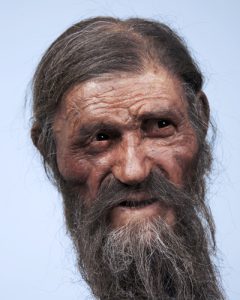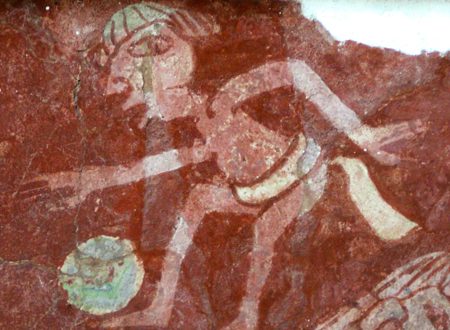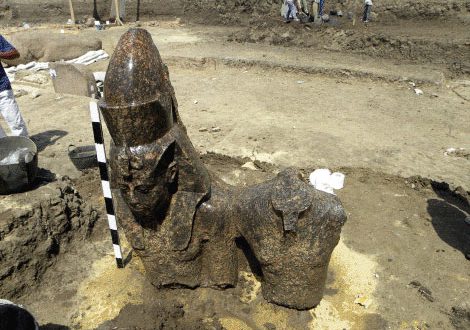
About 5,300 years ago, a man travelling the Alps was hit by an arrow. Roughly 5,280 years later, two German tourists exploring the Italian-Austrian border discover the world’s oldest and best preserved mummy.
Since, Ötzi has been examined by innumerable scientists and has received almost three million visitors.
To celebrate the natural mummy’s twentieth year as a global sensation, the South Tyrol Museum of Archaeology in Bolzano is dedicating a special exhibition to the Iceman.
The show’s highlight – besides a peek at Ötzi’s refrigerated corpse – is a new, naturalistic reconstruction of how Ötzi would have looked, based on anatomical 3D images of his skeleton.
In 1991 people all over the world followed with amazement the recovery of a completely preserved man from the Copper Age who, along with his clothing and equipment, had been preserved virtually intact in a glacier in the Ötztal Valley Alps for 5,300 years. The glacier mummy dubbed Ötzi, fascinates the public and scientists alike since.
We all want to know – and love to speculate – about the exact circomstances surrounding Ötzi’s death? Was he alone? If not, did his people try to save him? Did he receive a ceremonial burial – to then ‘slide off’? The answers to those questions are up for debate.
Things we do know about are his clothing – the ice has almost perfectly preserved the outfit worn by the Tyrolean Iceman. We also know which hunting gear he carried. Amongst others, a copper axe, a flint knife, arrows and an unfinished bow. Scientists even found traces of the food the Iceman ate before he died. Yet, what about Ötzi’s looks?
For the Ötzi20 exhibition, two experts from the Netherlands, Alfons and Adrie Kennis, worked on a ‘new face’ for the Iceman.
Using 3D images of his skull, X-rays and CT images, the Dutch artists have recreated the mysterious 5,300-year old man (the skull they worked from is shown here).
“This accurate yet sensitive representation of Ötzi will fascinate and stir people around the world”, says Museum Director Angelika Fleckinger. “It gives our history a face, in the truest sense of the word”.

The reconstruction shows a Copper Age dweller of the Alps, striking in the lifelike nature of every detail, from his skin colour down to the smallest wrinkle on his brow.
A man of medium height, slight yet wiry, with narrow, sharp features, an unruly beard and tanned skin.
“Twenty years ago the discovery of this man, his mysterious death, the unique insights into his life and world, all profoundly affected us”, says Erwin Brunner, editor-in-chief of National Geographic Germany.
“And now we can finally look him in the eyes and recognise, to our amazement, that he is really one of us!”
Ötzi’s new face and physique can be viewed at the exhibition “Ötzi20 Life. Science. Fiction. Reality”, opening March 1st. The show – which aims to present a more rounded picture of the Iceman, beyond the purely scientific aspect – takes up the entire 1200 square metres of the museum’s exhibition space. Four floors are being used to showcase the latest scientific findings, but also to display a marvellous collection of Ötzi oddities and absurdities – arcane interpretations, outlandish speculations, quirky marketing ideas and sensational media articles (and Brad Pitt with an Otzi tattoo).
The 3D Reconstruction is featured in the March issue of National Geographic Germany (you can read the article online, free from charge), and an official companion to the show, “Ötzi 2.0 – Eine Mumie zwischen Wissenschaft, Kult und Mythos (A Mummy between Science, Cult and Myth)”, is available in German (Theiss Verlag) and Italian (from Folio). Oh, and Ötzi’s on Facebook too. 😉





